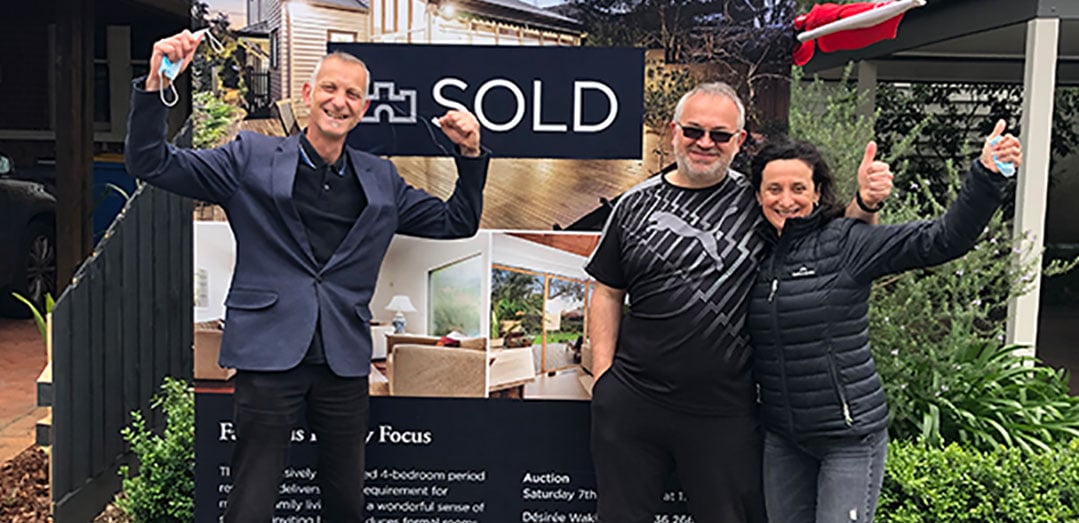You’ve been watching house prices rise for years and now winter is over, you’ve decided it’s time to cash in.
But while you’re probably pretty excited about calling in an agent and wowing prospective buyers with a fancy billboard and drone photography, you should understand what sort of costs you’ll face before final settlement.
Let’s take a look at some of the basic costs of selling property.
1. Agent’s commission
The structure of commissions varies enormously and you need to know exactly what you’re getting for your money.
The lowest commission isn’t necessarily the best deal. Some agents charge higher fees but include some marketing costs.
Bear in mind that all commissions are negotiable. If you have a special property, or the property market is steaming, agents will generally discount, knowing that it won’t be hard to find a buyer. Agents can also be enticed to negotiate down in a slow market when they are keen for listings.
According to Local Agent Finder, South Australia has the lowest commissions, in both percentage (1.99%) and real terms ($9,950), with Tasmania the most expensive (2.96% and $14,800). Queensland is not far behind at 2.62% and $13,100.

2. Marketing and advertising
Marketing costs include internet listing, print advertising, brochures, photography, and a floor plan. For unique or high-end properties, platinum listings on the front page of a real estate lift-out or website are expensive but effective!
Most real estate agents charge marketing and advertising costs directly to the client, so ask agents what their commission covers and make sure you understand who is responsible for what.
Marketing costs are similar across most states, at around $3,500 to $15,000 in Victoria, NSW and South Australia and $1,900-$10,000 in Queensland, depending on agency and method of sale.
3. Conveyancing costs
Conveyancing (property transfers) can be handled by a solicitor or a conveyancer. The latter are a little cheaper, but solicitors do offer specialist help if legal problems arise.
A solicitor might cost around $2,200 in NSW, compared to $1,800 for a conveyancer.
Cost can also vary by state. For example, solicitors in Queensland and Victoria can cost around $1,100, generally cheaper than NSW. In South Australia, a conveyancer might cost around $1,500.
4. Discharge of mortgage and fixed loan break costs
You’ll also need to pay to discharge your mortgage and get your title deeds. According to finder.com.au, discharge fees can vary from $150 to $400.
It is a good idea to give your lender or mortgage broker a call and ask for a loan payout figure, and get a breakdown of the costs. This is particularly important if you have a fixed rate home loan, as the break costs can run into the thousands and you don’t want any nasty surprises at settlement!
5. Presentation of your property
Depending on what needs to be done and how much work you can do yourself, you’ll probably need to spent somewhere between $1,000 and $10,000 before you go to market.
At the very least, spring clean the place. A fresh coat of paint can make a world of difference. Mow the lawns and keep them mowed during the sale campaign.
If your bathroom or kitchen are tatty, consider an update. But be careful not to over-capitalise on improvements, as you may not get your money back at sale time.
6. Property styling
The experts agree that cleaning and decluttering are key to enhancing the appeal of a house. Taking it one step further with professional property styling is becoming increasingly popular, particularly for high-end homes or in markets with a lot of available stock.
The makeover generally covers a six-week sale campaign, and can cost anywhere from around $1,500 to $8,000 depending on the length of the campaign and the size and location of the property.
Bear in mind that most stylists will want you and your stuff out of the place during that time, which likely means you’ll need to rent a storage space!
7. Moving costs
ING research shows the average cost of moving house in Australia is $1,618, but it can be far more depending on whether you’re moving down the road or interstate, and how much stuff you have.
If you’re moving interstate, look out for “backloading” opportunities, whereby you can save a heap of money by combining your move with another customer’s, either on the same journey or the return journey.
8. Capital gains tax
Then there’s the tax payable on any capital gain from the sale of investment properties and holiday homes. The tax rate depends on your taxable income in the year of sale. If you have owned the property for more than one year, you may be entitled to a 50% discount. The ATO website can help you calculate CGT on your property, and it’s a good idea to seek some expert advice from your accountant.
9. Disconnecting and reconnecting utilities
One of the final costs to consider are disconnection and reconnection fees for your utilities and other services like Foxtel or your landline. As well as the cost, this can be a time-consuming process, but there are one-stop moving services that can handle it for you.
Selling your home or investment property does come with some costs. But being aware of the potential expenses ahead of time can help you budget for them and avoid bill shock as the process unfolds!
If you require expert assistance to sell your home at no further cost contact our vendor advocates on 1300 500 555 or at [email protected].

